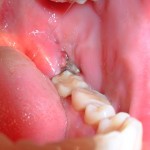
It has been estimated that about 25% of 10-40 year old European adults were affected by tooth wear (See Dental Elf 30th Sept 2013). The aim of this review was to identify similarities among treatment options for generalized tooth wear and to develop an approach to rehabilitation based on the best evidence available.
Searches were conducted in Medline and the Cochrane databases supplemented with searches of reference lists of identified studies. Studies that full described treatments for generalised tooth wear (into dentine) that were minimally invasive and aesthetically satisfying that did not involve removable dentures were considered. Only studies in English published in the last 10 years were considered. Five steps within the treatment procedures were analyzed: diagnostic waxing (DW), occlusal positioning (OP), vertical dimension increase (VDI), restoration, and follow-up.
- 11 studies involving 15 patients were included (8 case reports, 3 case series)
- Followup ranged from 0-20 months.
- Nine studies used DW,
- 6 performed diagnostic tooth arrangement (DTA).
- Centric relation was used in 5 studies,
- VDI was tested in 8 studies, 5 of which used a removable appliance.
- Seven studies implemented a provisional stage, and 5 used composite resin at that time.
- For definitive treatment, composite resin (6 studies) and glass ceramic (6 studies) were used.
- Seven studies applied a protective appliance,
- 5 scheduled regular post-treatment evaluation as means of aftercare.
The authors concluded
the present evidence is not strong enough to form firm conclusions, and the presented similarities cannot be substantiated with evidence. Therefore, comprehensive research into the designated treatment of generalized tooth wear is highly recommended.
Comments
As highlighted by the authors the inclusion criteria effectively restricts this review to adhesive techniques to manage tooth wear. It is not reported if study selection and data abstraction were carried out independently and although 11 studies were identified the overall number of patients was very small and the follow period was also limited for what is likely to be a long-term problem. Tooth wear is considered to be an increasing problem, this review suggest that we have little or no evidence at present to suggest the best methods of managing this condition.
Links
Muts EJ, van Pelt H, Edelhoff D, Krejci I, Cune M. Tooth wear: A systematic review of treatment options. J Prosthet Dent. 2014 Apr 12. pii: S0022-3913(14)00093-6. doi: 10.1016/j.prosdent.2014.01.018. [Epub ahead of print] Review. PubMed PMID: 24721500.

@TheDentalElf restrictive time period for studies too at 10 years. But I suspect little more out there anyway…